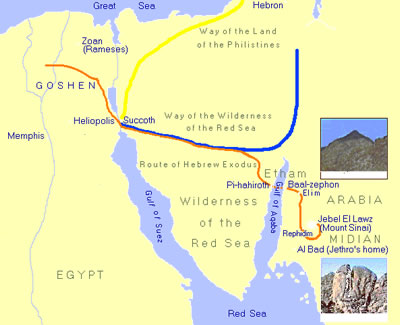
An Alternate Location for Mt. Sinai

| Bible School Home Page | Textbook - Framework for Christian Faith .pdf | generationword.com home page |
|---|
| Written | Online Audio or Video |
|
|---|---|---|
|
2009 mp3 Audio (ch.19), Moses, Exodus, Canaan, Joshua, Judges, Tabernacle Real Player Video (ch. 19), Moses, Exodus, Canaan, Joshua, Judges, Tabernacle |
Chapter Tests: Essay Tests: |
The Law of Moses, the Tabernacle, Joshua, Judges
Moses is born to a Hebrew family in the year 1525 BC but raised in the palace of Pharaoh Thutmose II. The name Thutmose (also read as Thutmosis) means “Thoth is born”. It can easily be seen that Moses was called by his Egyptian family name “mose” through out his life. The name of the Egyptian’s most important deity, Thoth, is dropped from Moses’ name leaving him with the simple ending “mose” or “moses” which means fittingly “born”, “son” or “rightful heir.” Hatshepsut, the half-sister and wife of Thutmose II, would have been the royal princess who took Moses from the Nile. Moses is trained in all the wisdom of Egypt and becomes a great man among the Egyptians. At the age of forty Moses tries to free the Hebrews but has to flee across the desert into the land of Midian. After serving as a shepherd for forty years Moses is called by God to return to Egypt to get the people of Israel. God wants Moses led these men and their families to Mt. Sinai to receive instructions from God.
Moses returns to Egypt in 1445 BC and strikes the land with ten plagues:
On the night the firstborn died God had Israel put the blood of lamb on their doors so the angel of death would Passover their house. The next day Israel left Egypt. After having brought the Israelites out of Egypt in one night God began the long process of getting Egypt out of the Israelites. They passed through the Red Sea into the wilderness as Pharaoh’s pursuing chariots drowned. In a few days and after several tests (bitter waters, manna, quail, water from a rock and an Amalekite attack) Moses arrived at Mt. Sinai with the people of Israel.

An Alternate Location for Mt. Sinai
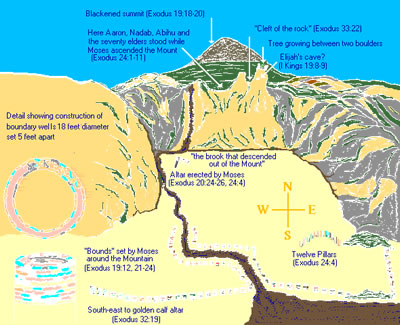
No Israelite was fully redeemed just because they left Egypt. Each Israelite needed to learn the laws and ways of God. God offered to enter into a conditional covenant with Israel and the people replied “All the Lord has spoken we will do.” The Israelites had willingly accepted the Mosaic Covenant. God then began to reveal to them the requirements of this Mosiac Covenant:
These requirements included:
The Mosaic Covenant also included a priesthood and a sanctuary called the tabernacle. The tabernacle was a tent with symbolic furniture used in ritual worship set up according to the plan shown to Moses by God.
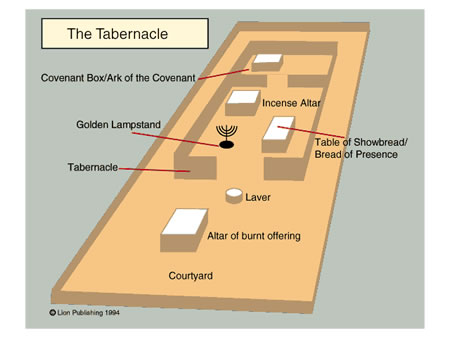
God then led the people to the land promised to Abraham, Isaac, and Jacob more than 400 years earlier. It was in this land that Israel was supposed to set up their nation. It was from this land that Israel would become a blessing to all other nations. And it was also from this land that the seed of the woman would rule as the King of Israel and lead all nations on earth in a prosperous and righteous age known as the Kingdom of God.
Thirteen months (Num. 1:1) after leaving Egypt (1444 BC) God led the people away from Mt. Sinai to the promise land. Due to lack of faith and human fear the generation that left Egypt refused to go into the Promised Land. The nation of Israel was forced to wander in the wilderness for the next 39 years (total of 40 years after the Exodus). Then the second generation would be led by Joshua across the Jordan into the promise land.
The land of the Canaanites was taken by Joshua and Israel in a five year war (1405-1400 BC) that included four basic campaigns.
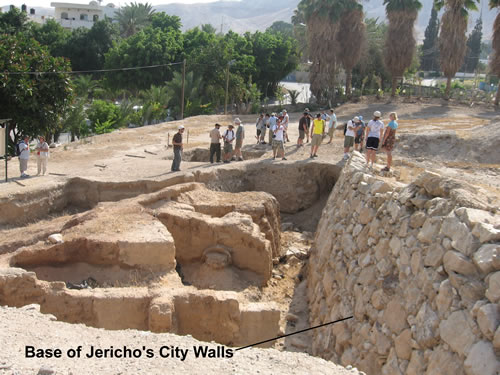
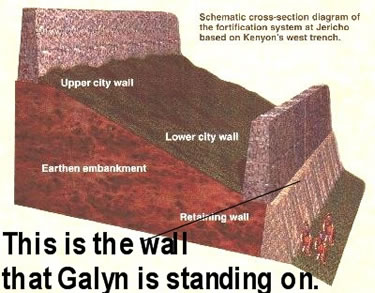
(This diagram is reverse of the photos above and below. This diagram
is drawn as the wall is viewed from the south. The photos are taken from the
north side.
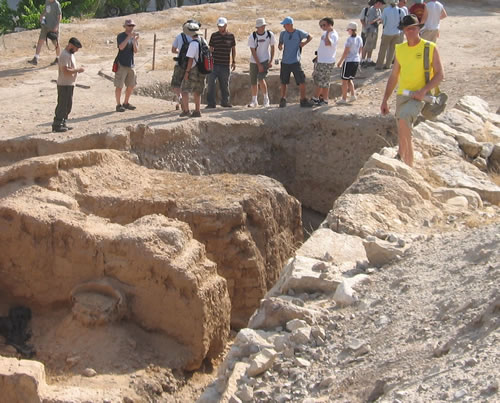
Galyn stands of the retaining wall of the ancient city of Jericho. The
city walls fell in 1405 when Joshua marched around the city.
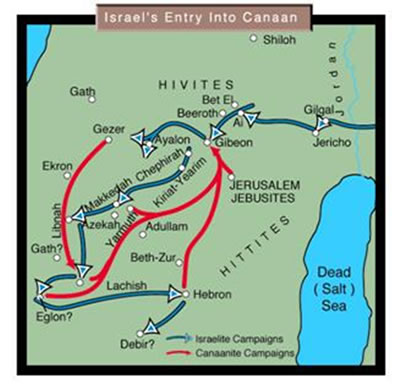
A map of Joshua's entrance campaign and southern
campaign when Israel took the promise land.9 (above).
The location of Hazor, one of Joshua's last and great
battles, is seen below in northern Israel.
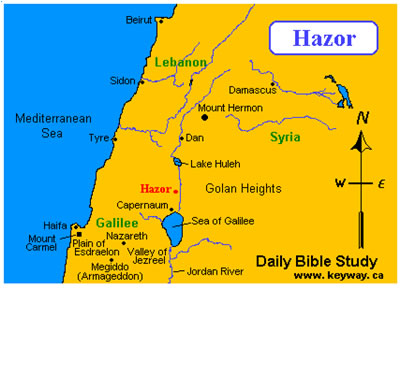
Photos from Hazor
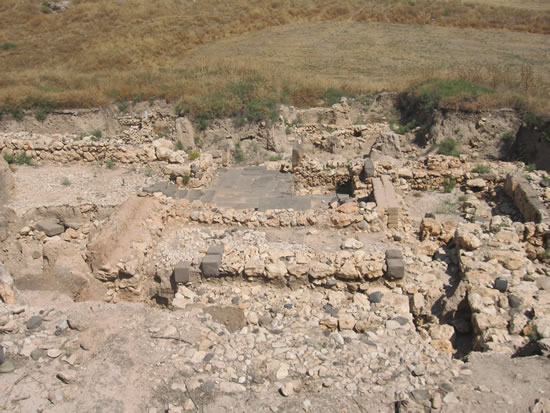
Canaanite palace remains in Hazor
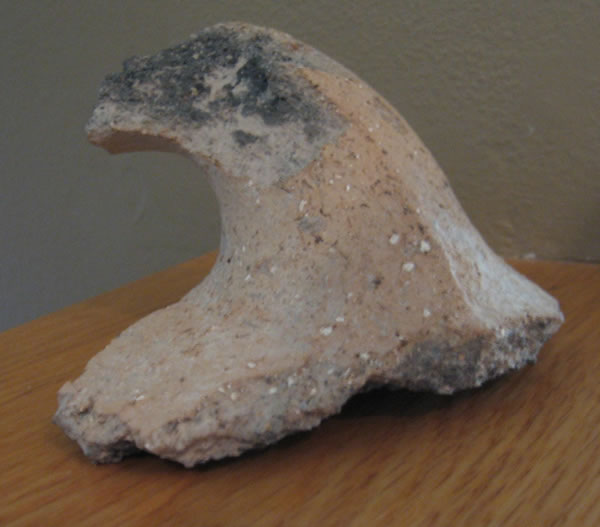
Handle from the above Canaanite palace in Hazor.
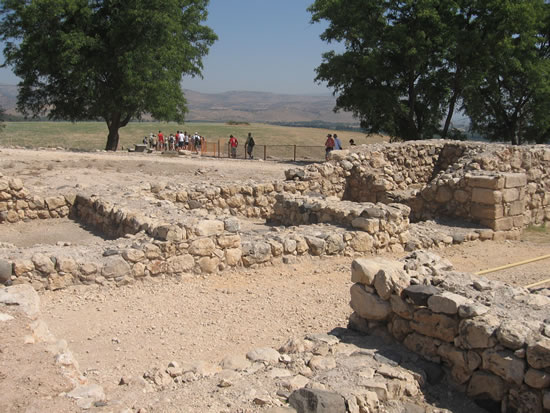
Three of the Six chambers of a gate built by Solomon in Hazor. The gate tower is
the taller structure to the right. The picture is taken from one of the other three
chambers on the other side of the passage way.
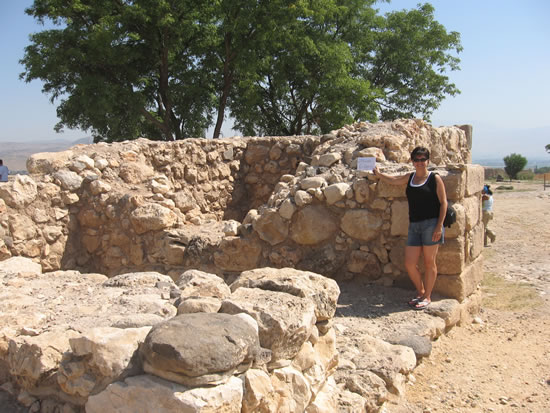
Toni stands in one of the chambers in front of the
base of the tower of the
six chamber gate seen in the above photo. More photos of Hazor can be seen HERE.
At the end of the Canaanite wars (1400 BC) Joshua divided the Promised Land of Canaan among the twelve tribes of Israel.
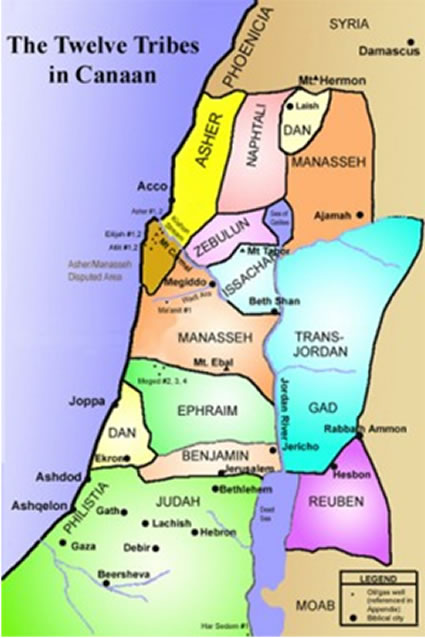
After Joshua’s death Israel was ruled by God in a government form called a Theocracy. Judges from the twelve tribes would lead for God through word and action. During this time Israel went through periods of blessing for obeying the Lord, abandonment when they forgot the Lord, oppression for rebelling against the Lord and deliverance for crying out to the Lord. God would often answer their cry for help by raising up a leader or a judge.
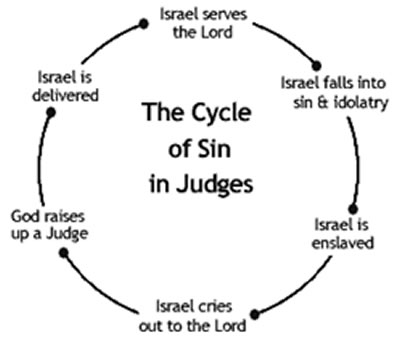
Judges like Ehud, Deborah, Gideon, Jephthah and Samson brought deliverance to the Israelites in often strange and bazaar episodes of heroic action and confused ethics. The period of the judges, 1380-1050 BC, was a time where Israel wavered between following God and following the practices of the Canaanites. Knowledge of God’s word and plan were very rare during most of this time. (1 Sam. 3:1) Many of the cultural practices and moral decisions in the book of Judges makes us wonder how these people could consider themselves the people of God. Consider the following:
The book of Ruth occurs during these days of the Judges and the book of First Samuel opens with the birth of one of the last judges of this time, Samuel. Around the age of 3 Samuel’s mother dedicated him to service in the tabernacle that was permanently set up in Shiloh. Here a corrupt priesthood abused their positions and the people slipped further and further into corrupt thought and behavior. The cycle of disobedience soon led to the greatest invasion of the entire period of the judges. The Philistines destroyed the Israelite army in battle, captured the Ark of the Covenant, invaded the land of Israel and burnt the tabernacle that Moses had built to the ground (1 Samuel 4-5)
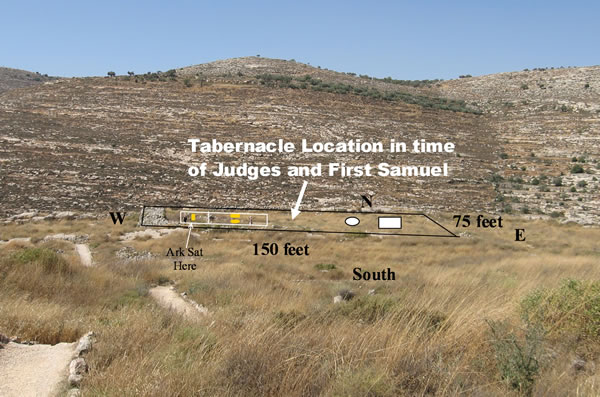
Location of the tabernacle in Shiloh in Samuel’s day. The stone base still remains.
Twenty years after this event the people were ready to come back to the Lord and Samuel, who is now about 32 years old assembled the people before the Lord to renew their covenant with the Lord. Samuel then traveled through out the central part of the land as the judge and prophet leading the people.
As Samuel grew old the people of Israel asked Samuel to give them a king. The Theocracy was not working because the people would not follow God. Samuel warned them of the problems they would face with a king but the people insisted and God allowed it. The first king chosen was Saul (1050-1010), from the tribe of Benjamin (1 Samuel 9-10). Saul’s first months went very well as he led the people and won battles. But a series of disobedient acts, an arrogant attitude and limited wisdom left Saul rebuked by the prophet Samuel and rejected by the Lord. Although Saul will rule for 40 years his reign was under the constant threat of oppression and invasion by the Philistines. The Spirit of the Lord that had anointed Saul like the prophets and judges before soon left Saul. An evil spirit tormented Saul and left the nation of Israel in a very vulnerable position.
KEY POINTS (back to the top)
OTHER SITES (back to the top)
BOOKS from Galyn's Shelf: (back to the top)
QUESTIONS (back to the top)
TAKE THE TESTS
Chapter Tests:
SeSect D, Ch 19 - Exodus through Solomon
Essay Tests:
Sect D, Ch 19 - Compare and Contrast the Tabernacle with the Temple